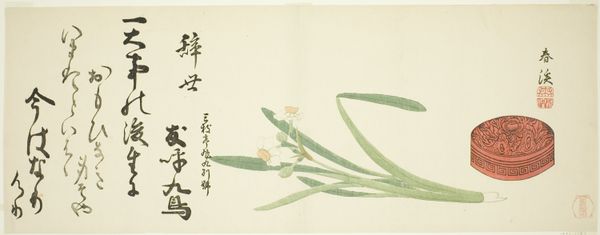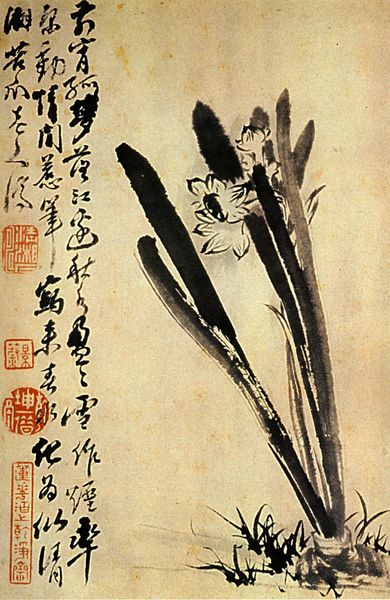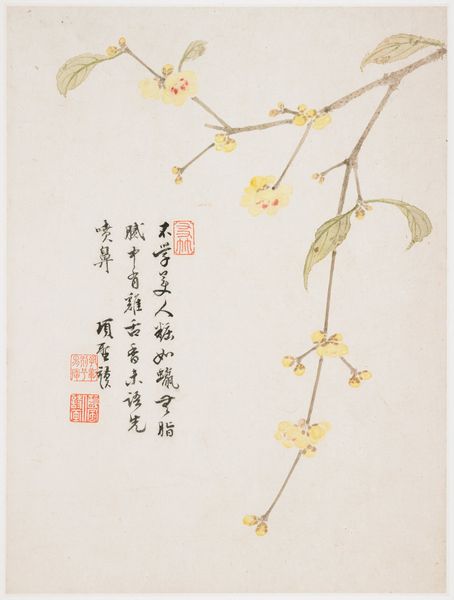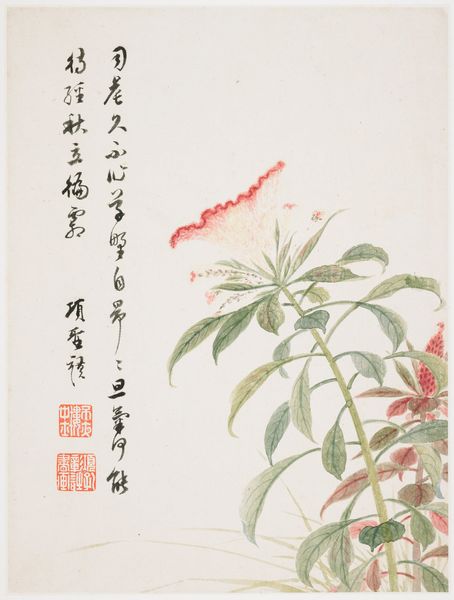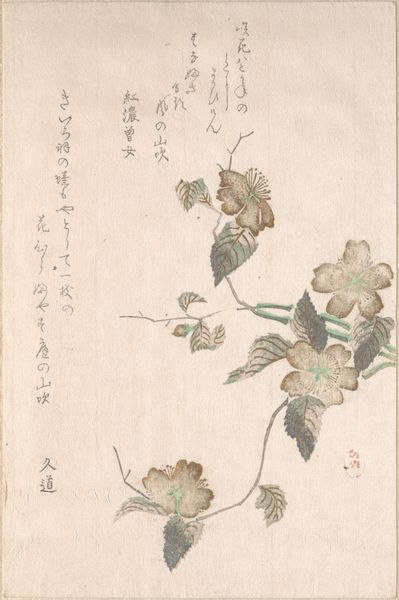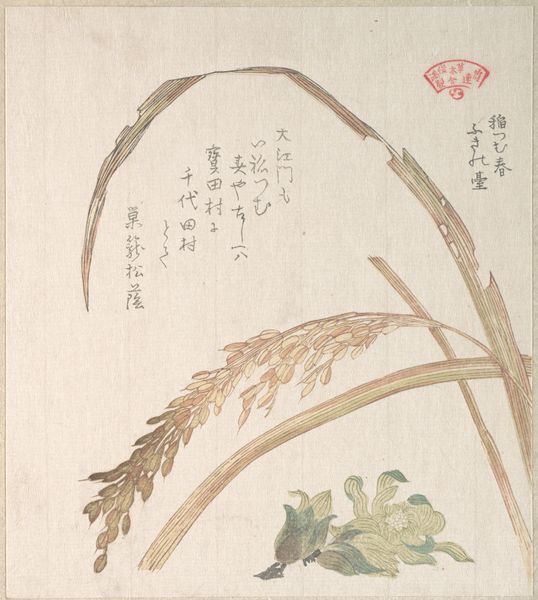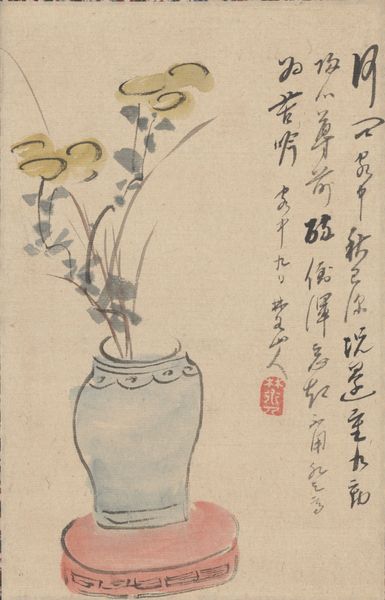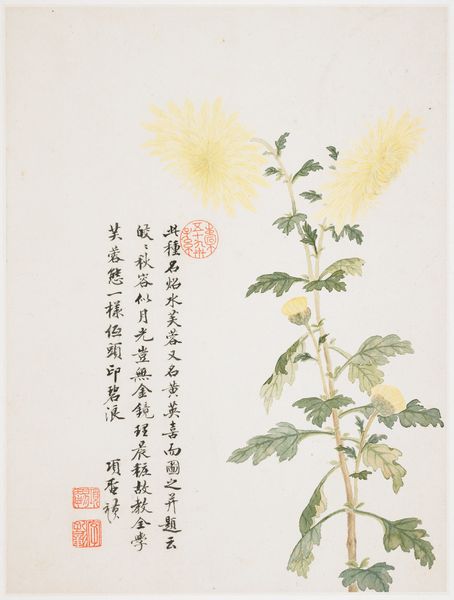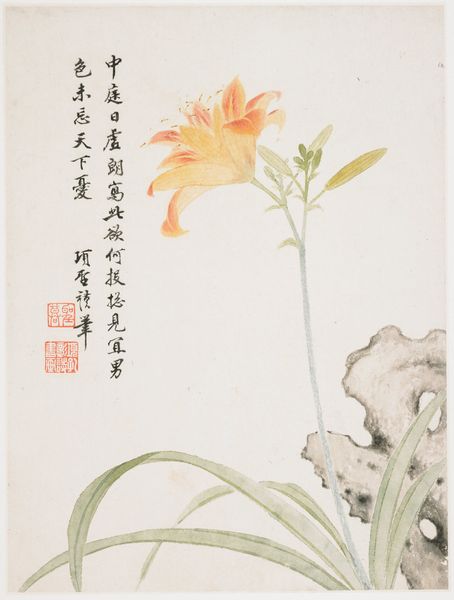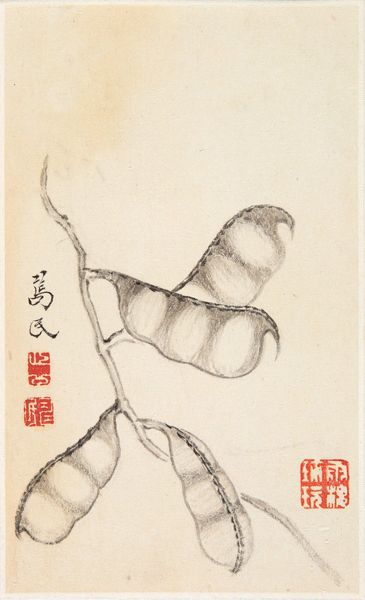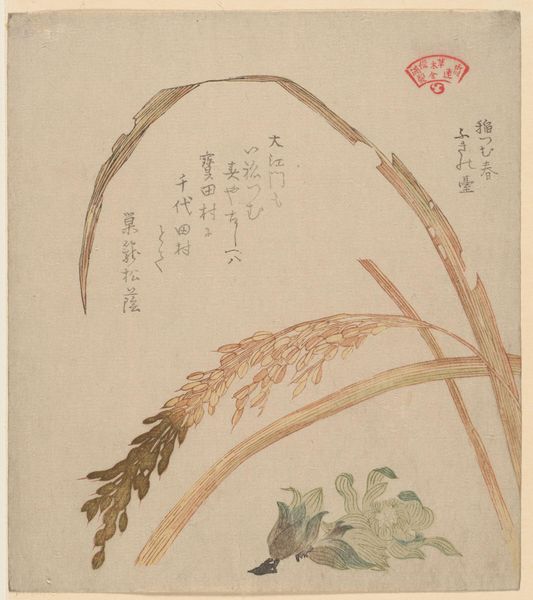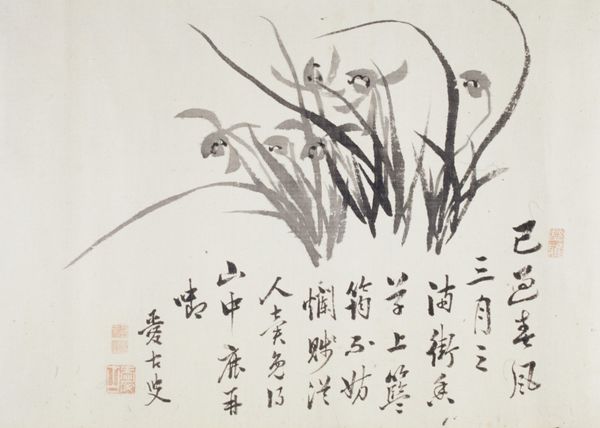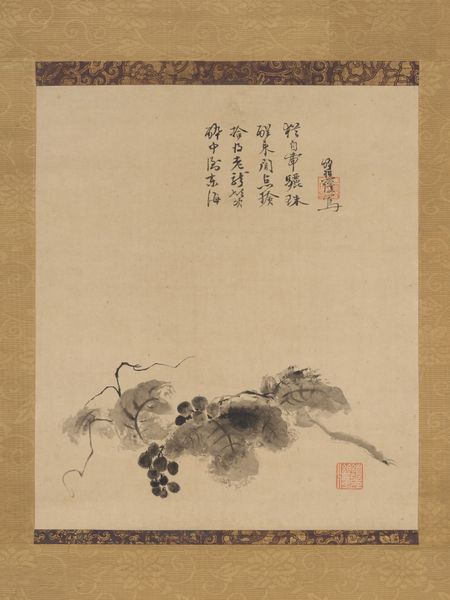
painting, watercolor, ink
#
painting
#
asian-art
#
watercolor
#
ink
#
plant
#
ink colored
#
botany
Copyright: Chang Dai-chien,Fair Use
Curator: Chang Dai-chien's "Painting after Shitao’s Wilderness Colors," created around 1930, uses ink and watercolor to offer a fascinating glimpse into artistic dialogue and the art of skillful imitation. Editor: The colors strike me first. They’re soft, almost dreamlike, in contrast to the rather blunt strokes composing the eggplants. There’s a real simplicity here that’s immediately appealing. Curator: It's interesting you mention that. Chang was, for a time, lauded as perhaps the greatest forger of Chinese paintings, successfully fooling experts for decades. This piece reveals his deep engagement with, and almost cheeky appropriation of, historical artistic voices. The choice to evoke Shitao invites considerations of authenticity and artistic lineage within Chinese painting. How does tradition weigh on creativity, particularly for an artist so involved with forgery? Editor: Seeing those plump eggplants against the backdrop of calligraphy…eggplants carry various cultural significances, right? In some contexts, they are connected to fertility, prosperity or even protection against evil, I wonder if these symbols deepen our understanding of Chang’s artistry. Are they pointing towards abundance, both artistically and perhaps even materially, given the historical context? Curator: Absolutely. The inscription acts as a visual and textual counterpoint, enriching our reading of the painting and rooting it within a specific cultural moment. There's a performative aspect to this homage. He is asserting himself within that tradition but with a kind of ironic awareness. It's an act of skillful ventriloquism that inevitably leads to broader reflections about what it means to create within structures of power, historical memory, and inherited norms. Editor: So the visual elements connect us to these powerful traditions. I keep thinking about memory. These eggplants aren’t merely vegetables rendered in watercolor, are they? They are a potent symbol representing a lineage. In evoking the spirit of past masters like Shitao, it becomes something new: a personal emblem, shaped and presented through the specific lens of history. Curator: Exactly. This painting pushes beyond pure aesthetics; it compels us to consider Chang's positionality, not just as a painter but as a savvy participant within a complex artistic and socio-cultural landscape. Editor: Well, I came away looking beyond face value—searching for layers within layers, history within the stroke. Curator: It reminds me that art constantly reflects the artist's negotiations within tradition and lived realities. It makes one curious to go and look again!
Comments
No comments
Be the first to comment and join the conversation on the ultimate creative platform.
